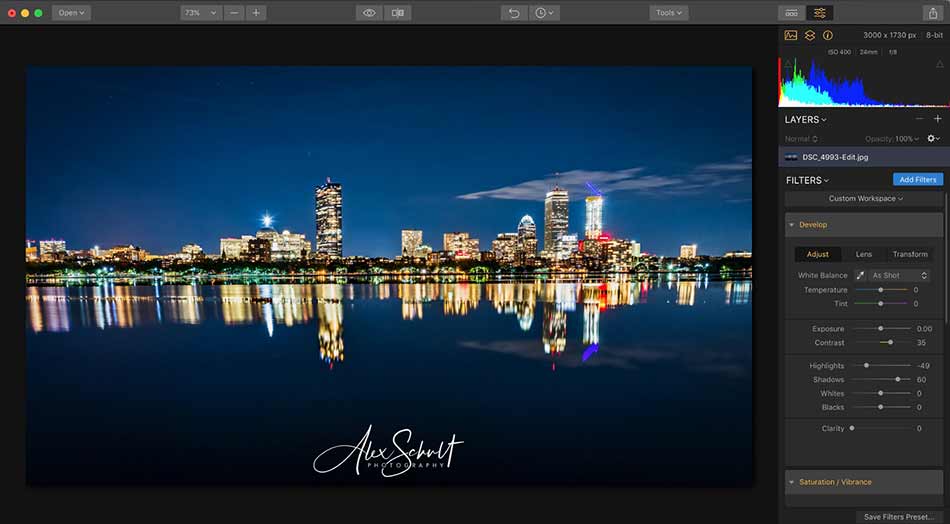
The app does have a snappy and responsive feel to it. Depending on your image and computer hardware, this process takes about 10-20 seconds. Then if you want to tweak any of the settings manually, you can do so in the settings panel on the right side of the UI. Add in the image you want to work on then, the Autopilot feature will scan your image and apply the recommended enhancements. The workflow for Tapaz Photo AI is pretty straightforward. You can customize any of the settings manually if you want more control over how your image is enhanced. This makes it easy for new users to jump into the app and get excellent results. It also has a new feature called Autopilot, which will automatically scan your image and use AI to detect the subject of your photo and recommend the best ways to enhance your image. Topaz Photo AI includes built-in module tools to remove noise, sharpen, recover faces, and enhance resolution. It can be used as a stand-alone application or as a plugin for popular photo editing apps, such as Lightroom and Photoshop. Now they have effectively rolled all of those apps into one app called Topaz Photo AI. Topaz Labs originally released three separate AI-powered photo apps: DeNoise AI, Gigapixel AI, and Sharpen AI. (This is not a sponsored review.) Did Topaz Photo AI make a difference? In short, I was very skeptical after initially using the software. I wanted to do a detailed review to see if using Topaz Photo AI on photos made a visible difference for large prints.

Topaz Labs recently released Topaz Photo AI, combining all of their existing photography AI apps into a single tool. But does it make a visual difference on a printed photo? Let’s find out. Topaz Photo AI claims to sharpen, remove noise, and increase the resolution of your photos.


 0 kommentar(er)
0 kommentar(er)
